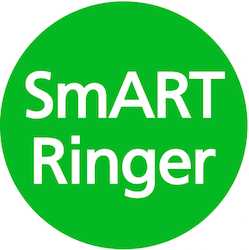In the last edition of Tower Talk, Mary Jones gave some tips for improving concentration. We all do our best to stay on our line and keep our bell in the right place, but what are we to do when our concentration lets us down? How can we both minimise mistakes and and get back on our line quickly when they happen?

Better still, can we actually put ourselves right before anyone notices?
The skills to put yourself (and others) right come from a detailed knowledge of what you’re ringing. This means looking beyond what you actually need to ring it. Just knowing ‘the line’ isn’t enough, you also need knowledge of how a method ‘fits’ together, or a grasp of where everyone is in Called Changes and not just you. If you want to make yourself more reliable here are some tips:
• Learn to call – just start with calling “Stand” after some Rounds to begin with. Then call some simple Called Changes and progress to pieces of ringing where you just say “Go…”, “That’s All” and “Stand”.
This encourages you to start to look at what others are doing (so you make the calls in the right place) and to develop an appreciation of the ringing as a whole.
• Stand behind as much as you can. Standing behind is not the sole preserve of those supporting ringers who may need some help; much can be learnt from standing behind experienced ringers who are ringing something that you are learning. Your brain will be engaged, but there’s no risk of going wrong!
• Do your homework. I cannot emphasise this enough. Once you can ring something and keep yourself right ringing it, don’t stop there. Try to look further to see what other bells are doing when you are ringing to see how it all fits together.
• Equip yourself with more than one way of staying right. If you’ve learnt Plain Bob Doubles by the order of the work, but then forget where you are, you’ll go wrong unless you’ve something to use as a backup. So, try to learn where you pass the treble before each piece of work so you still have a signpost if you forget the line. Even if there’s a learner on the treble who may not always be in the right place you’ll still have your knowledge of the line to fall back on, and the more you ring things the more signposts you’ll be able to spot and use to your advantage.
• Look for new things all the time; don’t rest on your laurels. Get to know a method so well that you can say “I’m doing abc so I reckon they must be doing xyz”. Look at the line afterwards to see if you were right.
• Learn to look for the nods and winks from others that confirm you’re right and acknowledge them in return. Sometimes these are the most important signposts because not only can you confirm that you are right, but you may also be confirming that the other person is right too!
• Maintain eye contact. This might sound obvious, but all that nodding and winking is pointless if nobody is looking.
• Take your time. It’s better to be able to do something simple well than something complex poorly.
• Smile. I’m serious. Smile. We do this for enjoyment right? So let’s enjoy it. Don’t be too self-critical if you make a mistake, just analyse it to find out why you went wrong so you can eliminate (or at least minimise) the risk of repeating the error.
There is nothing better than a ‘steady’ ringer. Someone who may be relied upon to ring well and not go wrong. Better still, someone who can stay right when others make mistakes, and even better still than that are those with enough knowledge to assist conductors with any ‘putting right’ that’s needed, even if it’s done silently with a nod or a wink. These people are not superhuman, they’ve just done their homework, and been willing to look beyond the blue line.
If you enjoyed this Learning tip from Jonathan which appeared in the 13th edition of Tower Talk, and would like to receive future copies of the magazine with similar tips, please subscribe here to receive ART’s free quarterly e-magazine for new ringers.

